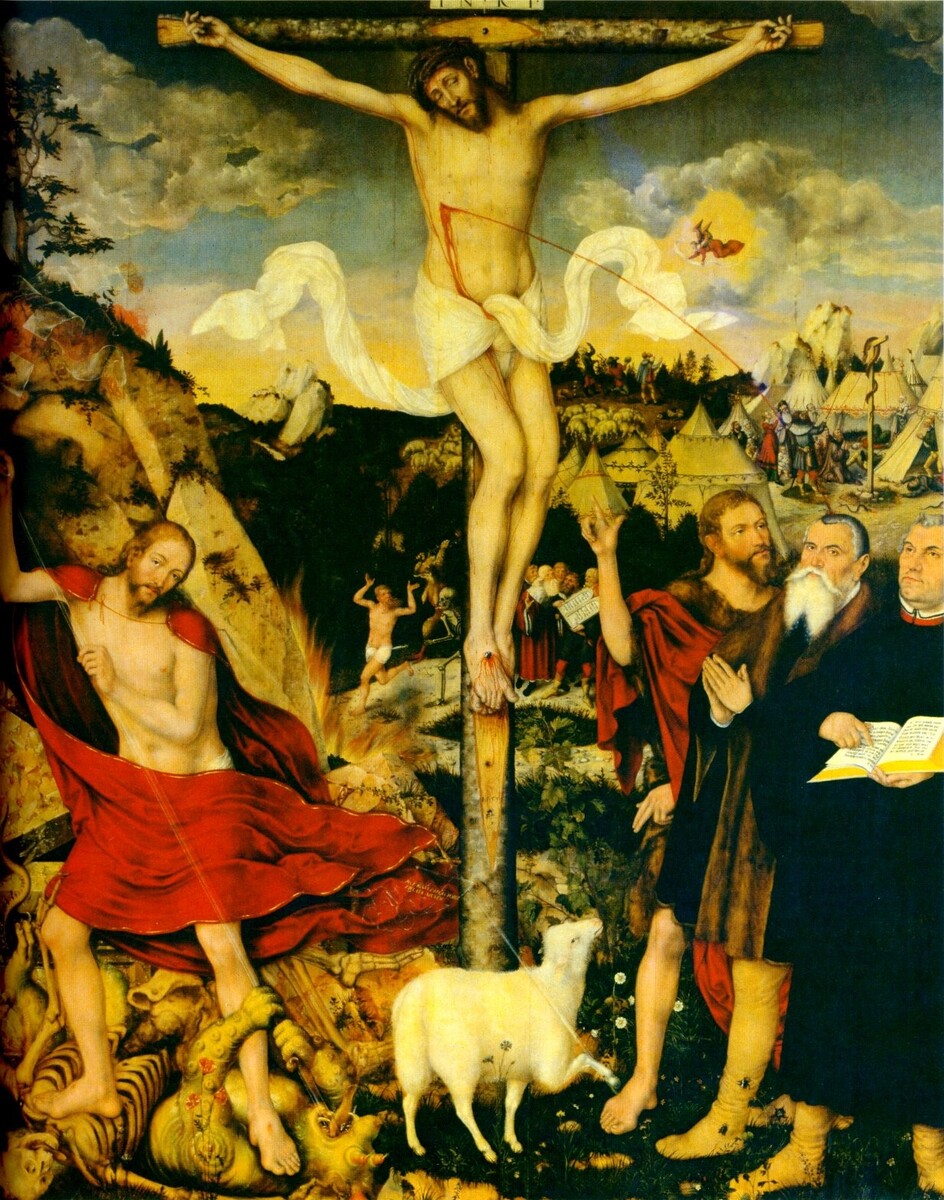Abstract
This is the central panel of a triptych forming the altarpiece of the
Weimar parish church of St. Peter and Paul, one of the flagship churches
of the Reformation. The triptych was commissioned as an epitaph for John
Frederick of Saxony and his family, who are depicted on the two side
panels. Long though to be Lucas Cranach the Elder’s last work, recent
research has shown it to be the work of his son, Lucas Cranach the
Younger.
In its didactic rather than devotional nature, the Weimar altarpiece
is a prime example of the Reformation’s visual propaganda. It is
composed of a number of different scenes (approved by Luther himself)
that explain the meaning of Christ’s death and that combine to form an
elaborate allegory of salvation. Cranach the Elder (second from right)
and Luther (far right) stand next to John the Baptist (third from right)
in the foreground of the panel. Luther points to a passage in the open
bible, “The blood of Jesus Christ cleanses us of all sins.” The blood
spouting from Christ’s wound falls on Cranach’s head, thus offering a
literal illustration of the biblical text.
